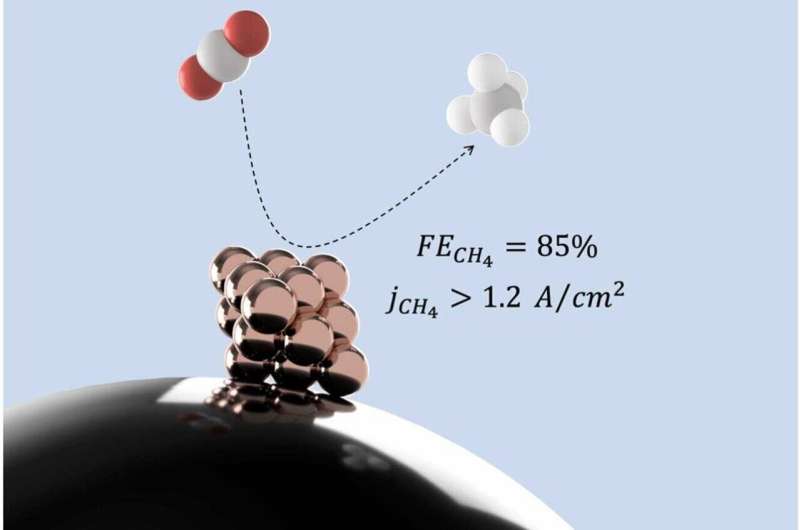This article has been reviewed according to Science X's editorial process and policies. Editors have highlighted the following attributes while ensuring the content's credibility:
fact-checked
trusted source
proofread
Using copper to convert CO₂ to methane could be game changer in mitigating climate change

Carbon in the atmosphere is a major driver of climate change. Now researchers from McGill University have designed a new catalyst for converting carbon dioxide (CO2) into methane—a cleaner source of energy—using tiny bits of copper called nanoclusters. While the traditional method of producing methane from fossil fuels introduces more CO2 into the atmosphere, the new process, electrocatalysis, does not.
"On sunny days you can use solar power, or when it's a windy day you can use that wind to produce renewable electricity, but as soon as you produce that electricity you need to use it," says Mahdi Salehi, Ph.D. candidate at the Electrocatalysis Lab at McGill University. "But in our case, we can use that renewable but intermittent electricity to store the energy in chemicals like methane."
By using copper nanoclusters, says Salehi, carbon dioxide from the atmosphere can be transformed into methane and once the methane is used, any carbon dioxide released can be captured and "recycled" back into methane. This would create a closed "carbon loop" that does not emit new carbon dioxide into the atmosphere. The research, published recently in the journal Applied Catalysis B: Environment and Energy, was enabled by the Canadian Light Source (CLS) at the University of Saskatchewan (USask).
"In our simulations, we used copper catalysts with different sizes, from small ones with only 19 atoms to larger ones with 1000 atoms," says Salehi. "We then tested them in the lab, focusing on how the sizes of the clusters influenced the reaction mechanism."
"Our top finding was that extremely small copper nanoclusters are very effective at producing methane," continues Salehi. "This was a significant discovery, indicating that the size and structure of the copper nanoclusters play a crucial role in the reaction's outcome."
The team plans to continue refining their catalyst to make it more efficient and investigate its large-scale, industrial applications. Their hope is that their findings will open new avenues for producing clean, sustainable energy.
More information: Mahdi Salehi et al, Copper nanoclusters: Selective CO2 to methane conversion beyond 1 A/cm², Applied Catalysis B: Environment and Energy (2024). DOI: 10.1016/j.apcatb.2024.124061
Provided by Canadian Light Source





















